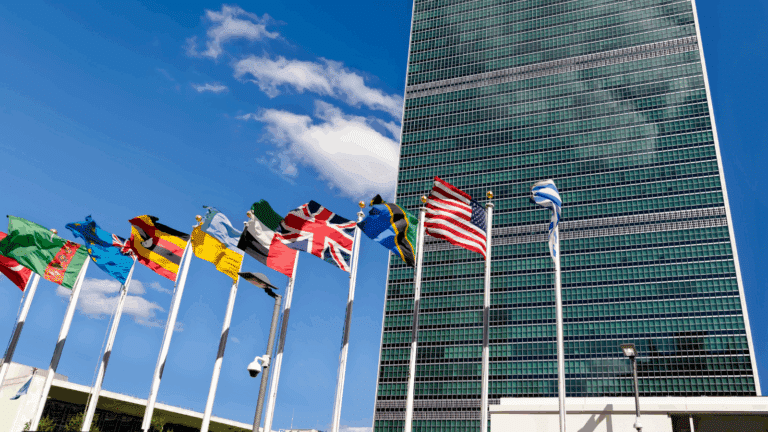This website uses cookies as well as similar tools and technologies to understand visitors’ experiences. By continuing to use this website, you consent to Columbia University’s usage of cookies and similar technologies, in accordance with the Columbia University Website Cookie Notice.
In 2018, China was the world’s leading emitter of heat-trapping gases by a wide margin. Its policies for limiting emissions will have a significant impact on the global climate for decades to come.
From a historical perspective, China’s status as the world’s leading emitter is relatively recent. During most of the 19th and 20th centuries, Chinese emissions were modest. Then, in the early part of this century, as the Chinese economy boomed, Chinese emissions began to skyrocket, overtaking those from the United States around 2006. China’s cumulative emissions of carbon dioxide since the beginning of the Industrial Revolution are roughly half those from the United States. (Carbon dioxide, the leading heat-trapping gas, stays in the atmosphere for many years once emitted.)
China’s leaders have declared that the impacts of climate change “pose a huge challenge to the survival and development of the human race” and that China is “one of the most vulnerable countries to the adverse impacts of climate change.”[11] The Chinese government has adopted short- and medium-term goals for limiting emissions of heat-trapping gases and a wide-ranging set of policies that contribute to meeting those goals. Those policies are shaped in part by other objectives, including promoting economic growth, cutting local air pollution and developing strategic industries.
This Guide examines Chinese climate change policies. It starts with a review of Chinese emissions. It then explores the impacts of climate change in China and provides a short history of the country’s climate policies. The bulk of the Guide discusses China’s principal climate policies, explaining the policy tools the Chinese government uses to address climate change and related topics. Appendices provide background on institutions that shape climate policy in China.
What are “climate policies”? Monetary and fiscal policies affect emissions and could therefore qualify, as could policies on many other topics. This Guide does not catalog all policies that could affect emissions or the climate, but instead focuses on policies most directly related to climate change, including those on energy, transportation, urbanization, forestry, climate adaptation and climate diplomacy.
In choosing policies to focus on, I am guided in part by international convention and in part by governments’ extensive reporting on this topic. The Intended Nationally Determined Contributions submitted by more than 160 nations to the UN Framework Convention on Climate Change show a broad international consensus that policies on energy, transportation, urbanization and forestry, among others, are considered “climate policies.” The Chinese government’s official documents on climate change show the same.[12]
Several official documents are important resources for anyone interested in China’s climate policies. Every year the National Development and Reform Commission (NDRC) publishes a report on China’s Policies and Actions for Addressing Climate Change.[13] These reports provide detailed information on a range of topics. Other key sources for understanding China’s climate policies include:
- China’s Intended Nationally Determined Contributions, submitted to the UN Framework Convention on Climate Change in June 2015;[14]
- Work Plan for Controlling Greenhouse Gas Emissions in the 13th Five-Year Plan, issued by the State Council in October 2016;[15]
- China’s First Biennial Update Report on Climate Change, submitted to the UN Framework Convention on Climate Change in December 2016;[16]
- China’s Second Biennial Update Report on Climate Change, submitted to the UN Framework Convention on Climate Change in December 2018;[17] and
- China’s Third National Communication on Climate Change, submitted to the UN Framework Convention on Climate Change in December 2018[18]
Several themes run through these documents, including strong commitments to low-carbon development, cutting coal use, scaling up clean energy sources, promoting sustainable urbanization and participating actively in climate diplomacy.
Implementation is fundamental to any policy. This is especially true in China, where policy implementation can be a considerable challenge. Key ministries may fail to coordinate. Resources for enforcement may be lacking. Policies designed to achieve different objectives may conflict. The priorities of provincial leaders may not align with policies from Beijing. For these reasons and more, stated policies—while important—are just part of the picture when it comes to understanding the Chinese response to climate change.
The organization of this Guide reflects that. Most chapters start with a section of background facts. This background provides context and can help in forming judgments on the impacts of policies to date and potential impacts of policies in the years ahead. Where implementation has been especially challenging or successful, that is highlighted.
This Guide can be read in parts or as a whole. Individual chapters are designed to stand alone and provide readers with information on discrete topics. The Guide as a whole is designed to provide an understanding of China’s response to climate change and the implications of that response for China and the world.
The Guide can be accessed in three ways:
- by purchasing it as a book on Amazon.com
- by visiting the Guide to Chinese Climate Policy website at https://chineseclimatepolicy.energypolicy.columbia.edu/, and
- by downloading it for free from the website above or the website of Columbia University’s Center on Global Energy Policy—http://energypolicy.columbia.edu/
This is a “living document.” Many of the facts and policies it describes will change in the months and years ahead. As that happens, this Guide will be updated. New editions of the Guide will be released regularly.
I welcome comments on and updates to the material in this Guide. Please send comments and updates to [email protected].
– David Sandalow
[11] People’s Republic of China, Enhanced Actions on Climate Change: China’s Intended Nationally Determined Contributions (June 2015) at p.1; People’s Republic of China, First Biennial Update Report on Climate Change (December 2016) at p.1.
[12] “INDCs as communicated by Parties,” UN Framework Convention on Climate Change.
[13] See NDRC, China’s Policies and Actions for Addressing Climate Change (November 2018); NDRC, China’s Policies and Actions for Addressing Climate Change (October 2017); NDRC, China’s Policies and Actions for Addressing Climate Change (October 2016).
[14] People’s Republic of China, Enhanced Actions on Climate Change: China’s Intended Nationally Determined Contributions (June 2015).
[15] State Council, “Work Plan for Controlling Greenhouse Gas Emissions in the 13th Five-Year Plan” (October 27, 2016).
[16] People’s Republic of China, First Biennial Update Report on Climate Change (December 2016).
[17] People’s Republic of China, Second Biennial Update Report on Climate Change (December 2018).
[18] People’s Republic of China, Third National Communication on Climate Change (December 2018).
Relevant
Publications
Six Key Issues That Defined Climate Week 2025
CGEP scholars reflect on some of the standout issues of the day during this year's Climate Week

3 Coming Flashpoints in Climate Geopolitics
World leaders are meeting in New York this month at the request of the United Nations Secretary-General António Guterres to discuss the state of global ambition on climate change.

How to Fully Operationalize Article 6 of the Paris Agreement
A key component of the Paris Agreement is Article 6, which introduces a framework to facilitate voluntary cooperation between―primarily using carbon credit trading―to help achieve their nationally determined contributions (NDCs) more cost-effectively.


